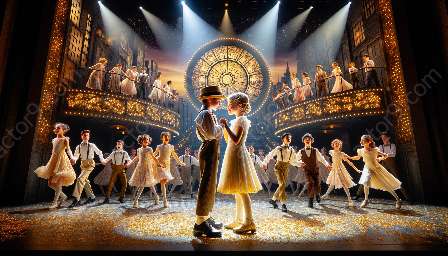Introduction
Broadway shows are known for their ability to attract diverse audiences, bringing people from all walks of life to experience the magic of live theater. The success of a Broadway show depends not only on the talent and creativity of the performers but also on the promotion and marketing strategies employed to reach and engage a wide range of audience members.
Understanding Promotion and Marketing in Broadway
Promotion and marketing in Broadway are essential elements in ensuring the success of a show. Today, with the rise of digital platforms and social media, the ways in which Broadway shows promote themselves have evolved. Successful promotion strategies not only focus on traditional advertising but also utilize digital marketing, social media, and community outreach to attract diverse audiences.
Successful Promotion Strategies
1. Digital Marketing
Digital marketing has become a vital component of Broadway show promotion. This strategy involves utilizing social media platforms, email marketing, search engine optimization (SEO), and online advertising to reach diverse audiences. Social media platforms such as Facebook, Twitter, and Instagram provide an opportunity to connect with potential theatergoers, share behind-the-scenes content, and create interactive experiences that resonate with different demographics.
Example:
A Broadway show may run targeted Facebook ads to reach specific demographics based on age, location, and interests. These ads can showcase the unique aspects of the show and encourage audience members to purchase tickets.
2. Inclusive Content Creation
Creating inclusive content is a powerful promotion strategy to attract diverse audiences. This involves incorporating diverse cast members, storylines, and themes that resonate with different cultural backgrounds and experiences. By showcasing the diversity within the show, Broadway productions can appeal to a wide range of audiences and create a welcoming environment for all theatergoers.
Example:
A Broadway musical that features characters from various cultural backgrounds and addresses universal themes of love and acceptance can resonate with audiences from different ethnicities and communities.
3. Community Outreach and Engagement
Community outreach plays a crucial role in attracting diverse audiences to Broadway shows. Engaging with local communities, schools, and cultural organizations can foster relationships and promote inclusivity. Offering discounted tickets, hosting educational workshops, and collaborating with community leaders help in creating a sense of accessibility and belonging for diverse audiences.
Example:
A Broadway show may partner with local schools to offer discounted tickets to students, conduct theater workshops, and provide opportunities for young people from different backgrounds to attend live performances.
4. Cross-Promotion and Partnerships
Collaborating with other organizations, businesses, and events through cross-promotion and partnerships can expand the reach of Broadway shows to diverse audiences. By aligning with entities that have existing connections with diverse communities, Broadway productions can benefit from increased visibility and engagement.
Example:
A Broadway show may partner with a multicultural festival or an advocacy group to promote the show to their respective audiences, creating a mutually beneficial promotional opportunity.
5. Targeted Audience Engagement
Understanding the interests and preferences of diverse audiences is essential in crafting targeted promotion strategies. By tailoring marketing campaigns to specific demographic segments, Broadway shows can engage with different audience groups and make them feel personally connected to the production.
Example:
A Broadway show targeting families may engage with parents through family-friendly content such as interactive online activities, special pre-show events, and dedicated ticket offers.
Conclusion
Successful promotion strategies used by Broadway shows to attract diverse audiences involve a combination of digital marketing, inclusive content creation, community outreach, cross-promotion, and targeted audience engagement. By employing these strategies, Broadway productions can reach and engage with diverse audiences, ultimately contributing to the success and longevity of musical theater.



































